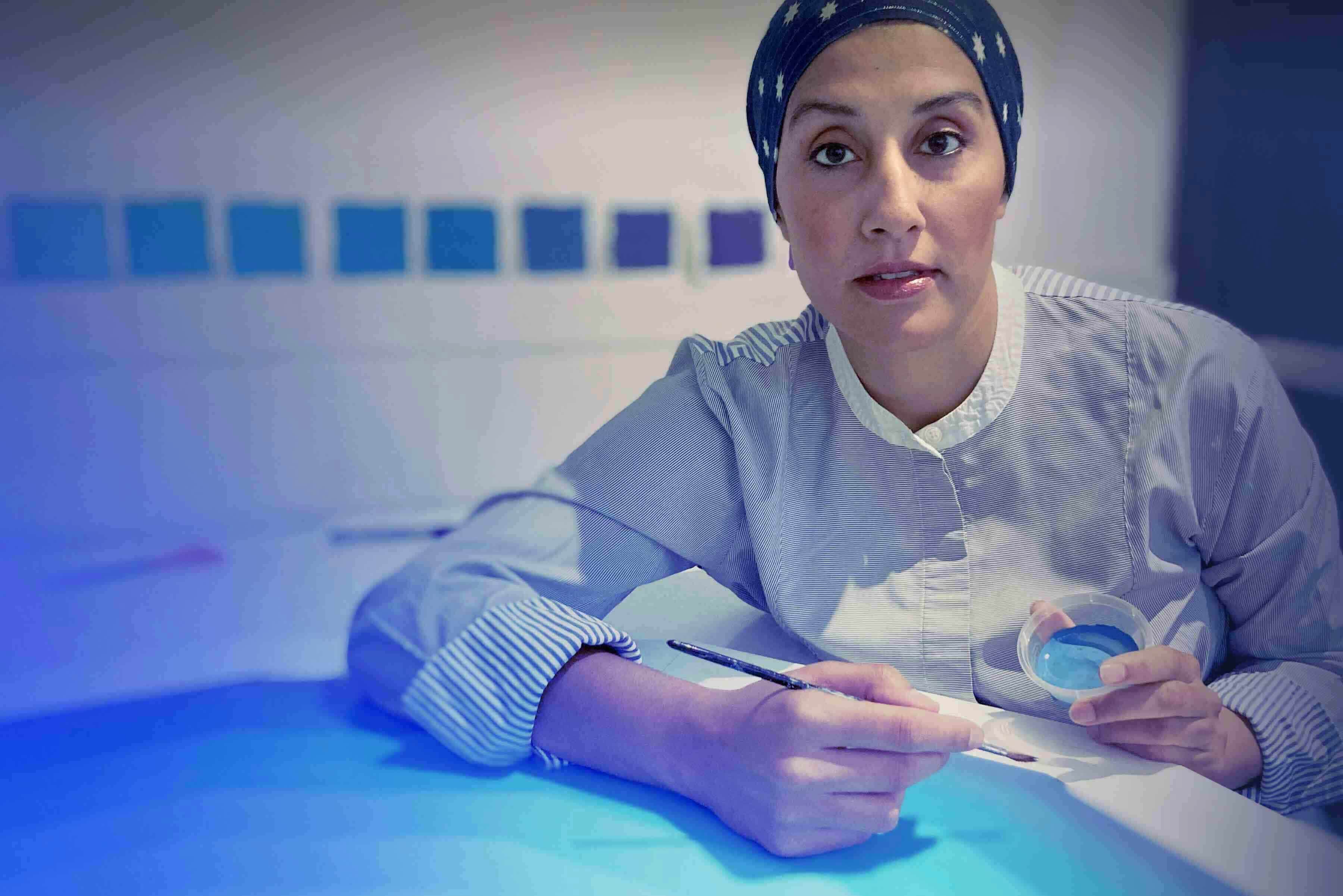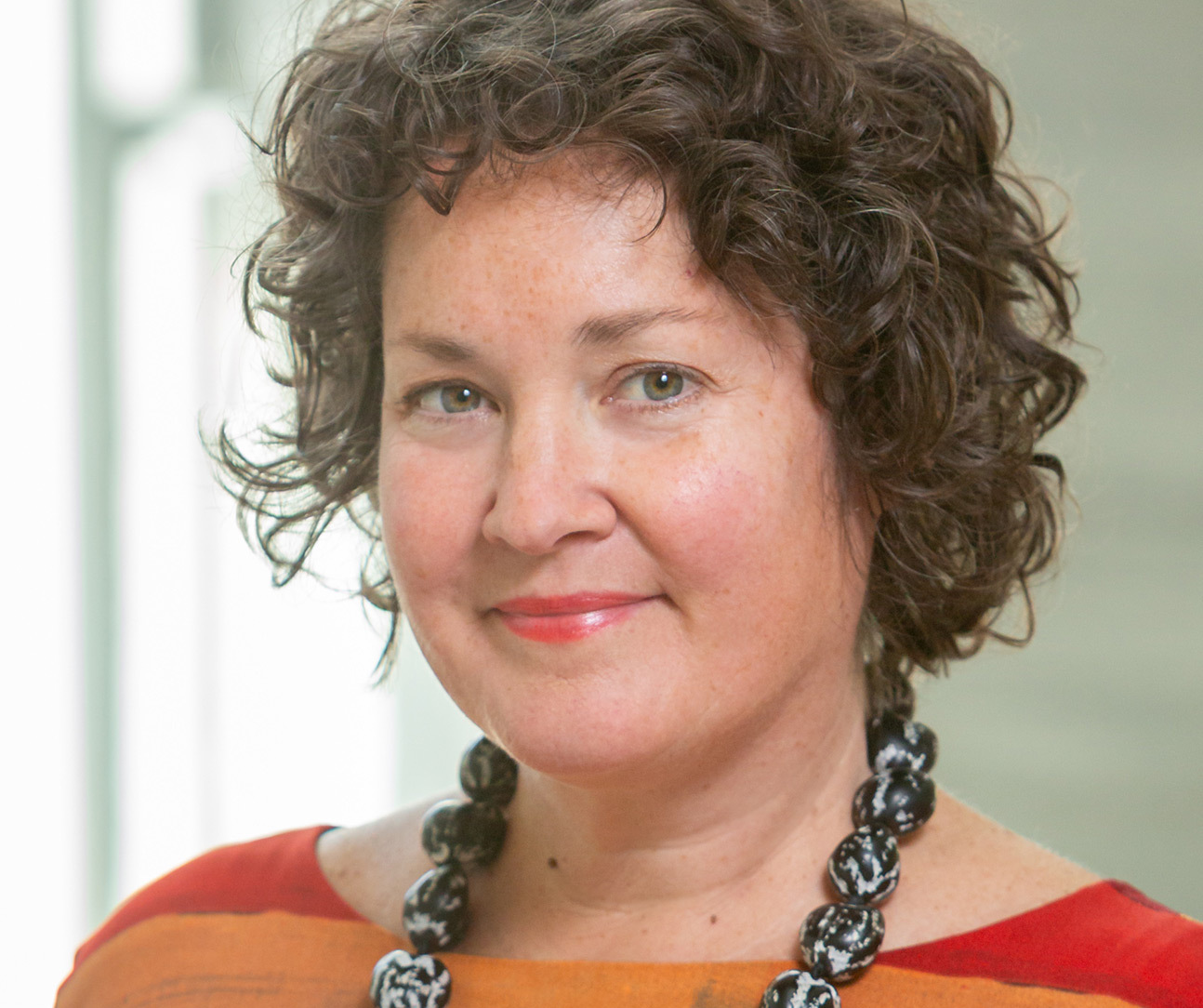This December PEM will present Zarah Hussain: Breath, a series of commissioned paintings by the British artist.
Mining her own reflections and experiences, Hussain also integrates the personal stories of members from our local community who have, in some way, experienced the physical trauma of losing their breath or its transformative healing power.
Hussain’s work — produced in London while the artist was under lockdown due to COVID-19 — utilizes the universal principles of mathematics and geometry to guide us into moments of deep contemplation and stillness. The exhibition also features an animation and soundscape that slows visitors down to activate an awareness of and deeper connection to the breath.
We caught up with the artist in October from her home in London. Below is a part of our conversation.
Q: Where did the idea for Breath come from?
A: When everything went into lockdown in March, it was very difficult being at home all the time. I was used to having so much freedom and going to art galleries, taking the kids in central London. Suddenly that was all stopped. We only had half an hour a day that we were allowed outside for exercise. It got quite boring.
I went through my studio, and I started to look through all the works I've done. I came across a series of paintings that I did when I was recovering after surgery. I had an operation to correct my breathing because I wasn't breathing properly. I'd started on two paintings, which I labeled Inhale and Exhale to visualize the act of breathing in and breathing out.
I started painting literally at the kitchen table with paper and acrylic paint and expanding on the series that I started earlier on due to my illness. I could identify with what people were going through at that moment with COVID-19.

It's only when something comes along like this disease where you can't breathe anymore and you realize how fundamental and essential the simple act of breathing is essential to your life. In a way, making the Breath paintings and having this time to create this body of work helped to have focus. The paintings symbolize the act of breathing.
Courtesy image.
Q: Who did you speak with in our area to incorporate local stories into this work?
A: I spoke to a respiratory specialist in a hospital about his job. His work was mainly helping people learn how to breathe without medical intervention. I also spoke to somebody in Salem who'd given birth during the pandemic and how it was to be doing those breathing exercises, but also doing it in the midst of a pandemic wherein another wing of the hospital you've got this disease going through. It was really interesting to talk to those that had gone through those specific experiences and meld that with my work.
Q: Why are you drawn specifically to the geometry in Islamic art?
A: I like math. I like order. I like repetition, symmetry, patterns. I always have. I find it really satisfying.
Q: Is there a relationship between the body, scientific thought, mindfulness and math?
A: The perfect breath is about five seconds. Straight away, that gives you a number you can work with. I see things mathematically, and so for me, these paintings were a visual interpretation of what it would look like to breathe in and to breathe out. As an artist, one of the things that I find fascinating is repetition. How numbers repeat and how things in our life go through cycles. Over the day, we breathe in 13,500 times.
There is definitely a connection between the body and the way we live in the world. I've been doing quite a lot of research on the breath. The first civilizations that started to look at breath in a really profound way were the Chinese. It's expressed as the word chi. In the Indian civilization, it's called prana. They see breath as a life force that gives you vitality, keeps you alive.
Most of us over-breathe. We're breathing too fast and too quickly. Also, the latest research thinks that anxiety and a lot of mental health problems have to do with people not breathing properly. When they're anxious and getting tight, they stop breathing.
Q: Are you conscious that there is a type of healing going on when people look at your work?
A: Yeah. If you go into a beautiful mosque or church, and if you look at certain types of spiritual or religious, traditional arts, there is definitely a healing in that. There's a meditative quality. There's an idea that the work transcends its physicality. It kind of permeates into your soul.
Q: You have said that your work is a contemporary interpretation of traditional Islamic art. In addition to paintings, you use animation in this exhibition. Do you think coding and animation make traditional Islamic art a little bit more present and more accessible?
A: Traditional artists that were making work using painting, sculpture, they were using the best materials they had available to them at the time. For myself, it's nice to use what technology is available and materials that are available today as an artist. It's quite nice to work in a format or in a technology that's familiar, but also using it in an artistic way. Not a commercial way or capitalistic way, but in a way that's just soothing. I wanted to create something meditative, trying to incorporate these same numbers that we've used in the paintings into a musical soundscape. Given what we've got going on with the pandemic and anxiety levels and people being really worried, I wanted to create a safe cocoon, a lovely space where you can come in and sit and watch an animation and let the music wash over you. To have this maybe 15 minutes, or half an hour of space to yourself, and to be thoroughly immersed in something that I've taken a lot of care and time to be really meditative and to slow you down. Hopefully, it will be a positive experience.
Q: You often say that you're trying to slow people down when they're looking at your work. Why are you trying to do that? Why do you think that's important?
A: The reason I want people to slow down is because I'm somebody that's always in a rush. That's the horrid pace of life that we live in. We live in a world that we're constantly on … you get the little notifications on your phone, "You've got to come pick kids up from school." There's always something new to watch on TV. There's always some new music. There's always stuff to do.
There is a real benefit of just slowing down and being quiet and trying to have time and focus to look inwards, to sit and breathe quietly, to meditate, to contemplate. There's real, real benefits in that for mental health, for clarity of thinking, for feeling OK. Everything you do should be mindful even if it's cooking dinner or gardening or taking the dog for a walk.
You don't need an instructor. You don't need a computer. You don't need WiFi. You don't need lots of money. Just learning and figuring out how to breathe properly. There's a real power in taking back time for yourself and to say, "Hang on, I just need to take time out and sit quietly for 10 minutes." Or, "I need to do stuff that nourishes my soul and to put things back in.”
Zarah Hussain: Breath is on view at PEM from December 19, 2020 through June 20, 2021.
SPECIAL PROGRAM
Alive with Air | Saturday, December 19 @ 9 am
Join PEM for a special yoga program to transform and awaken through breath. This restorative class with instructors from The Salty Buddha Yoga Studio in Salem will help welcome the winter solstice and release the energy of 2020. After class, explore Zarah Hussain’s work inside PEM’s intimate Jurrien Timmer Gallery. Special members-only perk: free registration for the livestream in-person tickets are limited. Please bring your own mat. Masks are required at all times. In-Person Drop-In: $15 | Livestream Drop-In: $5, free for members.
Join Siddhartha Shah, PEM's Director of Education and Civic Engagement, Curator of South Asian Art, for this GenPEM Virtual Q&A with Zarah Hussain. The conversation is introduced by Trevor Smith, Associate Director – Multisensory Experience, Curator of the Present Tense, and Kerry Schneider, GenPEM and Development Communications Officer.
Keep exploring
Past Exhibition
Zarah Hussain: Breath
December 19, 2020 to April 10, 2022

Blog
The vast unknown
5 Min read

PEMcast
PEMcast 16: Creative Constraint
17 min listen

Blog
India and its people
6 min read


